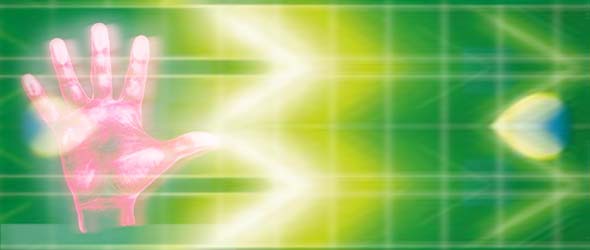BY LETTER
Early Superior Art
Culture and Society > Fine Arts > Classical Studies
Culture and Society > Fine Arts
Sophonts > Modosophonts > Homo Superior
Culture and Society > Fine Arts
Sophonts > Modosophonts > Homo Superior
From Looking Upward and Abstracting: A Proposed General Artistic Taxonomy of all Near-Baseline Efforts, as Best Understood by the Proto-Sophont by Wilhemina Gladstone, Beta Arae Volume/Utopia Sphere, 2027-2101.
A common thread in the history of almost every new clade with any artistic ability has been a generation of "new" artistic movements, usually among the first or second generation of the clade. In fact, the only exceptions have been those clades which cannot express themselves in an artistic fashion through over-specialization or supreme outside control of each and every individual. These efforts usually first investigate the potential of the clade's new abilities, and are typically self-indulgence or identity-building artworks. These are followed by a second movement which continues from the group-identity building themes to identify and clarify differences between the clade and its predecessors and contemporaries.
First schools invariably explore new abilities of a clade. Obviously, these efforts depend heavily on the nature of the clade and so properly belong more to psychological taxonomy than to the history and classification of Art. No more will we discuss these movements, for even the most impressive of such works show only the most obvious explorations of possibility-space. Only the later works ever make even cursory attempts to communicate, which places them properly within this work's scope.
Second schools continue the identity-building tradition to communicate clade-unique properties outside the clade. Three examples follow:
Crypto-Mnemonics and their Hermetic Links
Common mostly among Biopunks and early Tweaks, these works generally served purposes beyond the typical communication of difference all Early Superior Art attempts. These works, though primitive by the standards of the Merciful, also worked as memetic weapons. They spread memes promoting the social agenda of Biopunks and early Tweaks.Many of these works were based on occult and religious works such as Pilgrim's Progress and The Divine Comedy. By invoking obscure but memorable images through a superior understanding of mnemonic principles, works such as the graphic novel Yellow Sign, the movie adaptation of Leiber's Our Lady of Darkness, its companion Megapolisomancy For Fun and Profit, and the Nobel Prize nominated Untitled/Anonymous convinced wide segments of the population of the superiority of the authors' kind. This contributed to their mystique, and therefore the power of these early Superiors, which from our perspective were little different from their predecessors and contemporaries.
Renaissance Nanite
AT 466, Old Earth/Florence, European Union. The nanoreplicator converted asphalt into replicas of famous artworks. Later revelation made to this author from a Merciful source confirms long-held suspicions. The Renaissance nanite did originate in a under-controlled third-generation industrial cell. The slight uplift of a recycling tool into an a noble sculptor's chisel demonstrates the hither-to unsuspected speciation of technological infrastructure at this early date.Joh-Lau Introversion Meditation Chorales (I.M.C.)
Considered by many the last great artistic endeavor of the Joh-Lau before their collapse into barbarism, the planet-wide Introversion Meditation movement on Mercury arose from the survivors' guilt experienced by the Joh-Lau after the Technocalypse. Archaeology and post-anthropology reveal the chorales were meant to lock all Joh-Lau into a steady-state consciousness capable of lasting indefinitely. The role of their implants in enforcing and upholding this state remains disputed. The Introversion Meditation Chorales themselves appear to have served as a "carrier wave" for the rhythms of this proposed mind-state, and according to the surviving records, would have entranced future human-related forms into brief fusions with the mind state of the remaining Joh-Lau.Despite having designed a musical Rosetta Stone to restore their civilization, the Joh-Lau failed to implement it properly. Had every Joh-Lau simultaneously entered and constantly remained within the state, the Chorales might have succeeded. The population varied too-widely in susceptibility to the Chorales. This allowed those who "cheated the system" to gain short-term advantages at the cost of the Joh-Lau as a whole. Eventually these resistant populations created variant Chorales to reinforce their own group identity. Competition between the chorales for Joh-Lau support began shortly thereafter. The Joh-Lau population fractured according to their musical-consciousness state. Darwinian struggle ensued, followed by population swings and a unrecoverable eco-system crash throughout their habitats.
Chorales remain fascinating to nearbaselines even today. Attempts to recreate the Joh-Lau implants have succeeded, and allow us to experience the I.M.C. as their creators would have. Introversion Meditation practices have become quite easy, thanks to now-common tweaks and biohacks. The participatory opera, "Patience Until the End", dramatizes the Joh-Lau dilemma. It enjoyed great acclaim in the Early Interstellar Era, and even now undergoes the occasional revival.
Related Articles
Appears in Topics
Development Notes
Text by Jay Dugger
Bernd Helfert
Initially published on 01 October 2001.
page uploaded 1 October 2001, last modified 5 April 2007
Bernd Helfert
Initially published on 01 October 2001.
page uploaded 1 October 2001, last modified 5 April 2007







